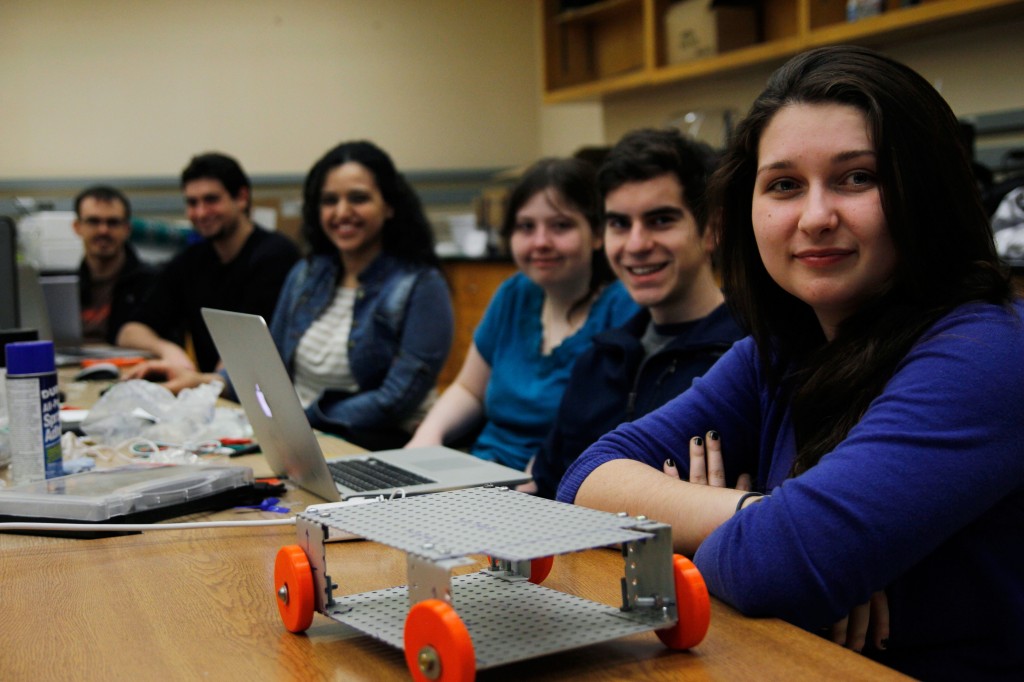
On April 18, Temple University will be taken over by robots. But this is not a scene out of a movie; more than 40 schools from across the Northeast, including Binghamton University, will be putting their robots to the test at the Student Design Competition at the American Society of Mechanical Engineers (ASME) Regional Student Professional Development Conference.
This is the first time the BU chapter of ASME, which became active last year, will compete in the Student Design Competition.
Monika Nowak, Hadir Elsayed, Victor Esposito, Noah Singer, Shannon O’Connor, Daniel Murphy and Benjamin Meyers were picked to represent BU last semester after participating in the BU ASME Ant Challenge. In this smaller competition, two teams of six to eight students had to build a 5-inch by 5-inch robot that could travel over grass, rocks and dirt; retrieve a tennis ball; and bring it back to the beginning of the course, according to Michael So, the vice president of BU ASME.
“We were able to get a sense of who had the right motivation and who worked well together,” said So, a senior majoring in mechanical engineering.
The theme of the 2015 Student Design Competition is Robots for Relief. Teams must build a robot that can traverse a course with different types of terrain, such as water, sand and rocks and climb a 20-centimeter step. Teams have three minutes to transport a payload of rice and beans from the start of the course to the end.
Devices at the Student Design Competition will be scored on the amount of payload transported, how long it takes to deliver the payload to the end of the course and how much energy the device consumes. The prizes include a first place cash prize of $500, second place of $300 and third place of $150. The top two teams move onto the international competition in November held at the ASME International Mechanical Engineering Congress and Exposition in Houston, Texas.
Mini competitions include poster presentations and oral presentations, and other schools participating are Yale University, Rochester Institute of Technology, Temple University and Drexel University.
The BU team started planning its robot in early January, conducting meetings over Skype to decide on the initial design. The design includes a system of lifting arms that leverage the robot up the large steps, treads to deal with the rough terrain and a raised secondary platform to protect electrical parts from water, according to Nowak, the team leader and a sophomore majoring in mechanical engineering.
The team received $1,000 to fund its robot from Lockheed Martin, a global aerospace, defense, security and advanced technology company based in Maryland, which is sponsoring them.
Although this is the first year BU will be participating, Paul Chiarot, an associate professor of mechanical engineering and the faculty adviser for the team, said he felt the team is ready for the competition.
“I have the utmost confidence that our students will do a great job,” Chiarot wrote in an email. “This event provides an excellent opportunity for our students to network with other schools and showcase our talents on a national stage.”


